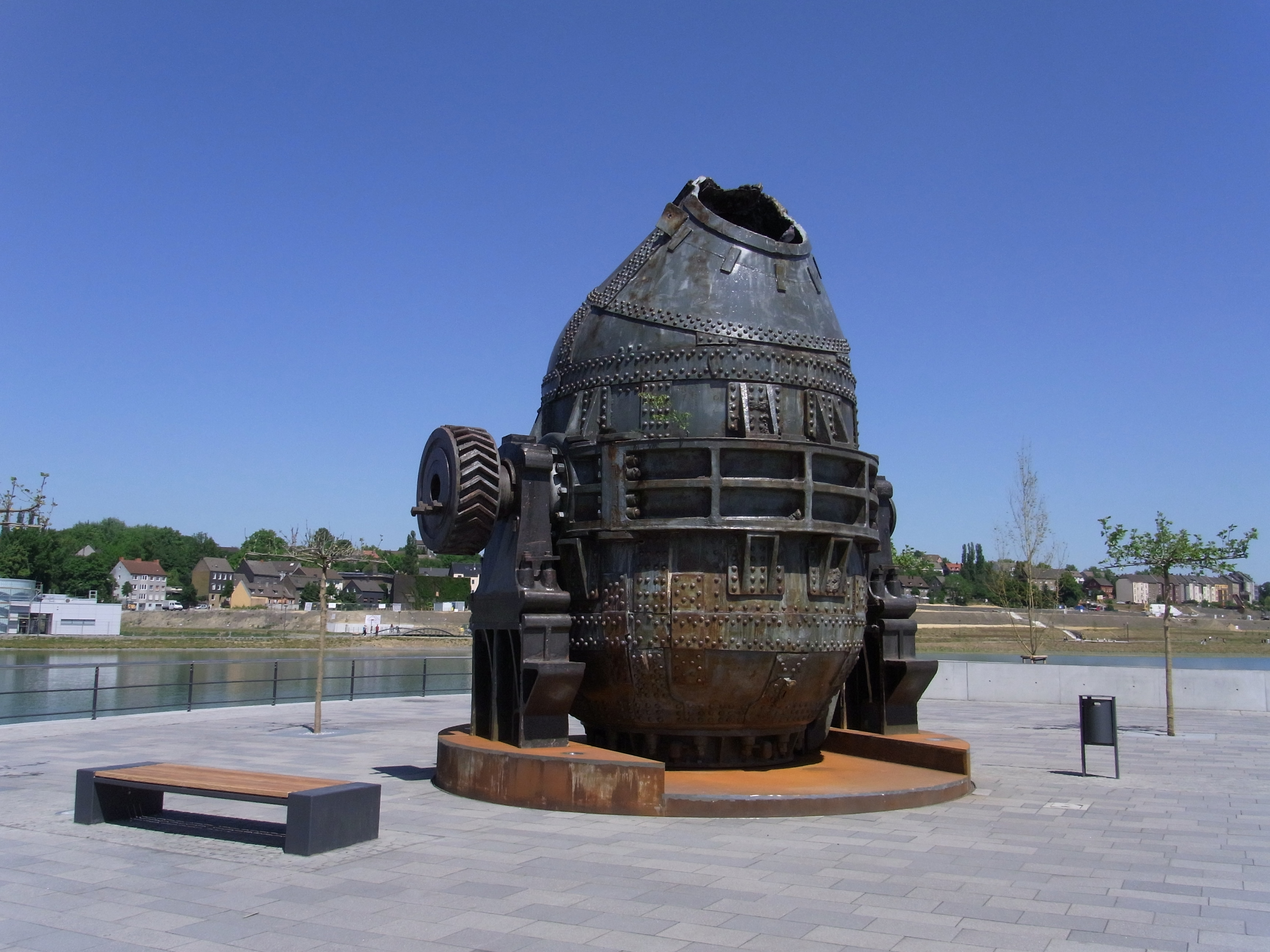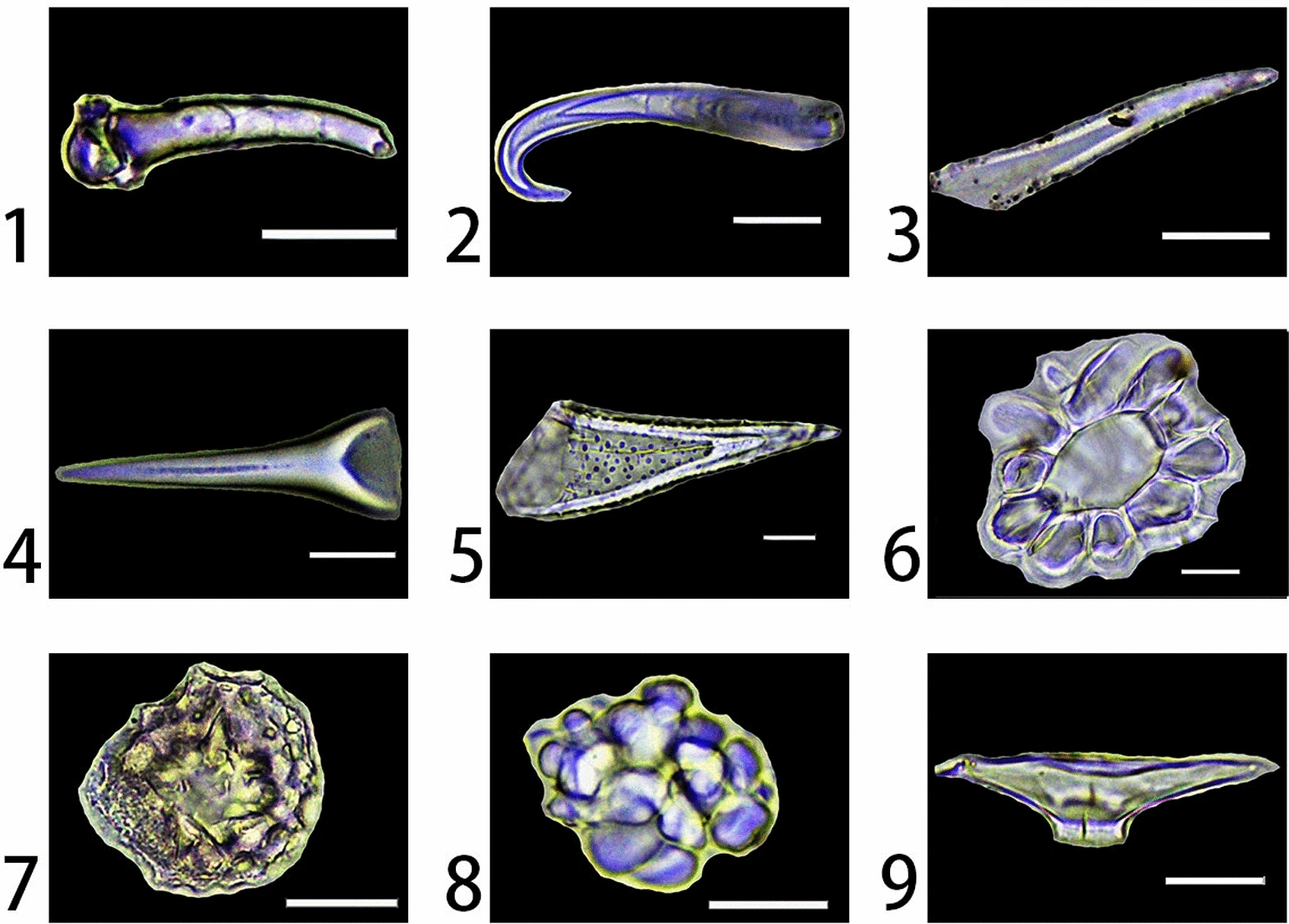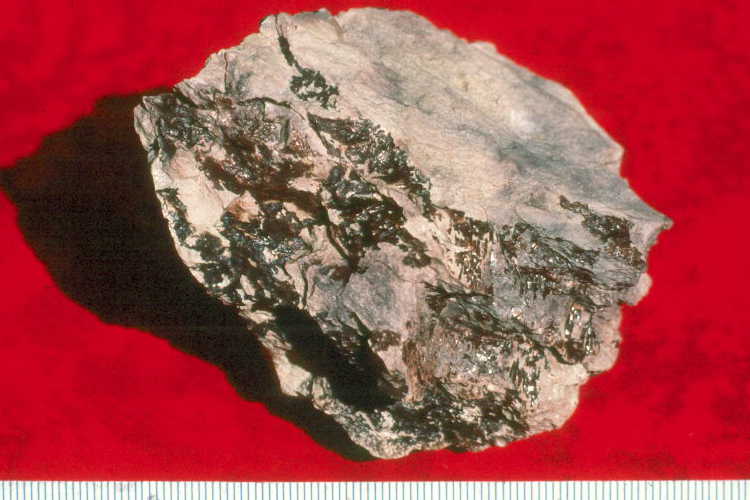|
Ganister
A ganister (or sometimes gannister ) is hard, fine-grained quartzose sandstone, or orthoquartzite,Jackson, J. A., 1997, ''Glossary of geology'', 4th ed. American Geological Institute, Alexandria. used in the manufacture of silica brick typically used to line furnaces. Ganisters are cemented with secondary silica and typically have a characteristic splintery fracture. Cornish miners originally coined this term for hard, chemically and physically inert silica-cemented quartzose sandstones, commonly, but not always found as seatearths within English Carboniferous coal measures. This term is now used for similar quartzose sandstones found typically as seatearths in the Carboniferous coal measures of Nova Scotia, the United States, and the Triassic coal-bearing strata of the Sydney Basin in Australia.Retallack, G. J., 1977. Triassic palaeosols in the upper Narrabeen Group of New South Wales. Part II: Classification and reconstruction '' Journal of the Geological Society of Australia'' ... [...More Info...] [...Related Items...] OR: [Wikipedia] [Google] [Baidu] |
Seatearth
Seatearth is a British coal mining term, which is used in the geological literature. As noted by Jackson,Jackson, J.A., 1997, ''Glossary of geology'', 4th ed. American Geological Institute, Alexandria. a seatearth is the layer of sedimentary rock underlying a coal seam. Seatearths have also been called seat earth, "seat rock", or "seat stone" in the geologic literature. Depending on its physical characteristics, a number of different names, such as underclay, fireclay, flint clay, and ganister can be applied to a specific seatearth. Underclay Underclay is a seatearth composed of soft, dispersible clay or other fine-grained sediment, either immediately underlying or forming the floor of a coal seam. Underclay typically contains the fossil roots and exhibits noticeably developed soil structures. It often has been altered by weathering. Underclays, which occur within Carboniferous coal measures, commonly contain Stigmarian roots. Synonyms for underclay included seat clay, root clay, ... [...More Info...] [...Related Items...] OR: [Wikipedia] [Google] [Baidu] |
Bessemer Converter
The Bessemer process was the first inexpensive industrial process for the mass production of steel from molten pig iron before the development of the open hearth furnace. The key principle is removal of impurities from the iron by oxidation with air being blown through the molten iron. The oxidation also raises the temperature of the iron mass and keeps it molten. Related decarburizing with air processes had been used outside Europe for hundreds of years, but not on an industrial scale. One such process (similar to puddling) was known in the 11th century in East Asia, where the scholar Shen Kuo of that era described its use in the Chinese iron and steel industry. In the 17th century, accounts by European travelers detailed its possible use by the Japanese. The modern process is named after its inventor, the Englishman Henry Bessemer, who took out a patent on the process in 1856. The process was said to be independently discovered in 1851 by the American inventor William Kelly ... [...More Info...] [...Related Items...] OR: [Wikipedia] [Google] [Baidu] |
Sandstone
Sandstone is a clastic sedimentary rock composed mainly of sand-sized (0.0625 to 2 mm) silicate grains. Sandstones comprise about 20–25% of all sedimentary rocks. Most sandstone is composed of quartz or feldspar (both silicates) because they are the most resistant minerals to weathering processes at the Earth's surface. Like uncemented sand, sandstone may be any color due to impurities within the minerals, but the most common colors are tan, brown, yellow, red, grey, pink, white, and black. Since sandstone beds often form highly visible cliffs and other topographic features, certain colors of sandstone have been strongly identified with certain regions. Rock formations that are primarily composed of sandstone usually allow the percolation of water and other fluids and are porous enough to store large quantities, making them valuable aquifers and petroleum reservoirs. Quartz-bearing sandstone can be changed into quartzite through metamorphism, usually related to ... [...More Info...] [...Related Items...] OR: [Wikipedia] [Google] [Baidu] |
Dolomite (mineral)
Dolomite () is an anhydrous carbonate mineral composed of calcium magnesium carbonate, ideally The term is also used for a sedimentary carbonate rock composed mostly of the mineral dolomite. An alternative name sometimes used for the dolomitic rock type is dolostone. History As stated by Nicolas-Théodore de Saussure the mineral dolomite was probably first described by Carl Linnaeus in 1768. In 1791, it was described as a rock by the French naturalist and geologist Déodat Gratet de Dolomieu (1750–1801), first in buildings of the old city of Rome, and later as samples collected in the mountains now known as the Dolomite Alps of northern Italy. Nicolas-Théodore de Saussure first named the mineral (after Dolomieu) in March 1792. Properties The mineral dolomite crystallizes in the trigonal-rhombohedral system. It forms white, tan, gray, or pink crystals. Dolomite is a double carbonate, having an alternating structural arrangement of calcium and magnesium ions. Unless it ... [...More Info...] [...Related Items...] OR: [Wikipedia] [Google] [Baidu] |
Gilchrist–Thomas Process
The Gilchrist–Thomas process or Thomas process is a historical process for refining pig iron, derived from the Bessemer converter. It is named after its inventors who patented it in 1877: Percy Carlyle Gilchrist and his cousin Sidney Gilchrist Thomas . By allowing the exploitation of phosphorous iron ore, the most abundant, this process allowed the rapid expansion of the steel industry outside the United Kingdom and the United States. The process differs essentially from the Bessemer process in the refractory lining of the converter. The latter, being made of dolomite fired with tar, is basic, whereas the Bessemer lining, made of packed sand, is acidic. Phosphorus, by migrating from iron to slag, allows both the production of a metal of satisfactory quality, and of phosphates sought after as fertilizer, known as "Thomas meal". The disadvantages of the basic process includes larger iron loss and more frequent relining. After having favored the spectacular growth of the Lorrain ... [...More Info...] [...Related Items...] OR: [Wikipedia] [Google] [Baidu] |
Base (chemistry)
In chemistry, there are three definitions in common use of the word base, known as Arrhenius bases, Brønsted bases, and Lewis bases. All definitions agree that bases are substances that react with acids, as originally proposed by G.-F. Rouelle in the mid-18th century. In 1884, Svante Arrhenius proposed that a base is a substance which dissociates in aqueous solution to form Hydroxide ions OH−. These ions can react with hydrogen ions (H+ according to Arrhenius) from the dissociation of acids to form water in an acid–base reaction An acid–base reaction is a chemical reaction that occurs between an acid and a base. It can be used to determine pH via titration. Several theoretical frameworks provide alternative conceptions of the reaction mechanisms and their applica .... A base was therefore a metal hydroxide such as Sodium hydroxide, NaOH or Calcium hydroxide, Ca(OH)2. Such aqueous hydroxide solutions were also described by certain characteristic properties. ... [...More Info...] [...Related Items...] OR: [Wikipedia] [Google] [Baidu] |
Okavango Delta
The Okavango Delta (or Okavango Grassland; formerly spelled "Okovango" or "Okovanggo") in Botswana is a swampy inland delta formed where the Okavango River reaches a tectonic trough at an altitude of 930–1,000 m in the central part of the endorheic basin of the Kalahari. All the water reaching the delta is ultimately evaporated and transpired and does not flow into any sea or ocean. Each year, about of water spreads over the area. Some flood waters drain into Lake Ngami. The area was once part of Lake Makgadikgadi, an ancient lake that had mostly dried up by the early Holocene. The Moremi Game Reserve, a national park, is on the eastern side of the delta. The delta was named as one of the Seven Natural Wonders of Africa, which were officially declared on 11 February 2013 in Arusha, Tanzania. On 22 June 2014, the Okavango Delta became the 1000th site to be officially inscribed on the UNESCO World Heritage List. Geography Floods The Okavango is produced by seasonal flood ... [...More Info...] [...Related Items...] OR: [Wikipedia] [Google] [Baidu] |
Phytolith
Phytoliths (from Greek, "plant stone") are rigid, microscopic structures made of silica, found in some plant tissues and persisting after the decay of the plant. These plants take up silica from the soil, whereupon it is deposited within different intracellular and extracellular structures of the plant. Phytoliths come in varying shapes and sizes. Although some use "phytolith" to refer to all mineral secretions by plants, it more commonly refers to siliceous plant remains. In contrast, mineralized calcium secretions in cacti are composed of calcium oxalates.Piperno, Dolores R. (2006). Phytoliths: A Comprehensive Guide for Archaeologists and Paleoecologists. AltaMira Press . The silica is absorbed in the form of monosilicic acid (Si(OH)4), and is carried by the plant's vascular system to the cell walls, cell lumen, and intercellular spaces. Depending on the plant taxa and soil condition, absorbed silica can range from 0.1% to 10% of the plant's total dry weight. When deposited, ... [...More Info...] [...Related Items...] OR: [Wikipedia] [Google] [Baidu] |
Soil
Soil, also commonly referred to as earth or dirt, is a mixture of organic matter, minerals, gases, liquids, and organisms that together support life. Some scientific definitions distinguish ''dirt'' from ''soil'' by restricting the former term specifically to displaced soil. Soil consists of a solid phase of minerals and organic matter (the soil matrix), as well as a porous phase that holds gases (the soil atmosphere) and water (the soil solution). Accordingly, soil is a three-state system of solids, liquids, and gases. Soil is a product of several factors: the influence of climate, relief (elevation, orientation, and slope of terrain), organisms, and the soil's parent materials (original minerals) interacting over time. It continually undergoes development by way of numerous physical, chemical and biological processes, which include weathering with associated erosion. Given its complexity and strong internal connectedness, soil ecologists regard soil as an ecosystem. Most ... [...More Info...] [...Related Items...] OR: [Wikipedia] [Google] [Baidu] |
Sedimentary Geology (journal)
''Sedimentary Geology'' is a peer-reviewed scientific journal about sediments in a geological context published by Elsevier Elsevier () is a Dutch academic publishing company specializing in scientific, technical, and medical content. Its products include journals such as ''The Lancet'', ''Cell'', the ScienceDirect collection of electronic journals, '' Trends'', th .... About its scope the journal states it ranges "from techniques of sediment analysis to geodynamical aspects of sedimentary-basin evolution.". External links * {{Official website, http://www.journals.elsevier.com/sedimentary-geology/ Geology journals English-language journals Sedimentology Sedimentary rocks Sedimentary basins ... [...More Info...] [...Related Items...] OR: [Wikipedia] [Google] [Baidu] |
Paleosol
In the geosciences, paleosol (''palaeosol'' in Great Britain and Australia) is an ancient soil that formed in the past. The precise definition of the term in geology and paleontology is slightly different from its use in soil science. In geology and paleontology, a paleosol is a former soil preserved by burial underneath either sediments (alluvium or loess) or volcanic deposits (volcanic ash), which in the case of older deposits have lithified into rock. In Quaternary geology, sedimentology, paleoclimatology, and geology in general, it is the typical and accepted practice to use the term "paleosol" to designate such "''fossil soils''" found buried within sedimentary and volcanic deposits exposed in all continents. In soil science the definition differs only slightly: ''paleosols'' are soils formed long ago that have no relationship in their chemical and physical characteristics to the present-day climate or vegetation. Such soils are found within extremely old continental cra ... [...More Info...] [...Related Items...] OR: [Wikipedia] [Google] [Baidu] |
Rhizolith
Rhizoliths are organosedimentary structures formed in soils or fossil soils (paleosols) by plant roots. They include root moulds, casts, and tubules, root petrifactions, and rhizocretions. Rhizoliths, and other distinctive modifications of carbonate soil texture by plant roots, are important for identifying paleosols in the post-Silurian geologic record. Rock units whose structure and fabric were established largely by the activity of plant roots are called rhizolites. Varieties of rhizoliths Colin F. Klappa first proposed the term ''rhizolith'' for various organosedimentary structures produced by the activity of plant roots in 1980, and his terminology has since been widely adopted with some extensions. Root moulds Root moulds are tubular voids that preserve the shape of a root that has subsequently decayed away. Such voids will collapse unless the root penetrated soil that was already at least partially lithified. Closely packed, very thin root moulds give the sediments an ''al ... [...More Info...] [...Related Items...] OR: [Wikipedia] [Google] [Baidu] |

Saunders_Quarry-1.jpg)





